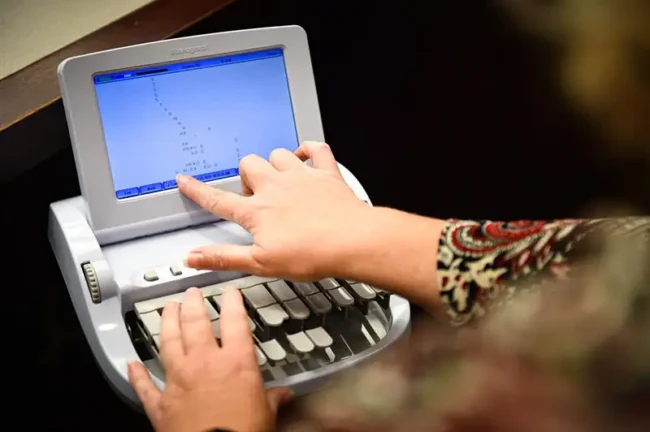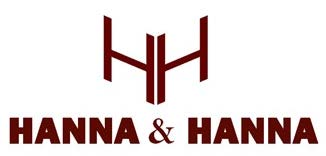How to Ensure a Clean Transcript
 The accuracy and clarity of a legal transcript are paramount. A “clean transcript”—one that is verbatim, free of errors, and meticulously formatted—serves as the bedrock of successful litigation, enabling attorneys to build compelling cases, conduct thorough analyses, and present irrefutable evidence. At Hanna & Hanna Reporting, we understand that achieving this level of precision isn’t accidental; it’s the result of a deliberate process, advanced technology, and the expertise of highly skilled professionals. This guide will delve into the critical factors that ensure a clean transcript, highlighting the pivotal role of expert court reporters and comprehensive litigation support in depositions, arbitrations, and other legal settings.
The accuracy and clarity of a legal transcript are paramount. A “clean transcript”—one that is verbatim, free of errors, and meticulously formatted—serves as the bedrock of successful litigation, enabling attorneys to build compelling cases, conduct thorough analyses, and present irrefutable evidence. At Hanna & Hanna Reporting, we understand that achieving this level of precision isn’t accidental; it’s the result of a deliberate process, advanced technology, and the expertise of highly skilled professionals. This guide will delve into the critical factors that ensure a clean transcript, highlighting the pivotal role of expert court reporters and comprehensive litigation support in depositions, arbitrations, and other legal settings.
The Foundation: The Court Reporter’s Role
The journey to a clean transcript begins and largely depends on the skill and diligence of the court reporter. These certified professionals are not merely transcribers; court reporters are highly trained specialists who capture spoken words with unparalleled speed and accuracy.
- Stenographic Expertise: The core of precise court reporting lies in stenography. A proficient court reporter uses a stenotype machine to capture testimony phonetically, often at speeds exceeding 200 words per minute. Their ability to keep pace with rapid speech, distinguish between speakers, and accurately render complex legal and technical jargon in real-time is the first and most critical step in ensuring a clean transcript.
- Real-time Capabilities: Many modern court reporters offer real-time reporting, where their stenographic notes are instantly translated into text on a screen. This not only provides immediate feedback for accuracy but also allows legal teams to follow along and make quick strategic adjustments during live proceedings, such as depositions or hearings.
- Active Listening and Contextual Understanding: A court reporter’s role extends beyond mere typing. They must possess exceptional active listening skills, interpreting intonation, pauses, and non-verbal cues to accurately contextualize the spoken word. This understanding helps in distinguishing homophones, correcting mumbled words, and flagging potential ambiguities for clarification, all of which contribute to a cleaner final product.
- Rigorous Training and Certification: Ensuring a clean transcript starts with hiring a certified professional. In Texas, for instance, court reporters are certified by the Judicial Branch Certification Commission (JBCC), guaranteeing they have met stringent standards for speed, accuracy, and ethical conduct. Hanna & Hanna Reporting exclusively employs certified court reporters, providing clients with confidence in the integrity of their transcripts.
Precision and Quality Control with Transcripts
Even after the live capture, the process of ensuring a clean transcript involves several layers of meticulous review and refinement.
- Transcription and Translation Software: Advanced software plays a crucial role in converting stenographic notes into readable text. While highly efficient, this technology still requires human oversight to refine and perfect the output.
- Expert Proofreading and Editing: This is where the rough draft transforms into a clean, certified transcript. Experienced proofreaders and editors meticulously review every word, checking for:
- Verbatim Accuracy: Ensuring every word spoken is precisely reproduced.
- Grammar and Punctuation: Correcting errors without altering meaning.
- Spelling of Proper Nouns and Technical Terms: Verifying the correct spelling of names, places, medical terms, scientific jargon, and legal terminology.
- Formatting Consistency: Adhering to strict legal formatting standards, including pagination, speaker identification, and exhibit labeling, which is essential for legal admissibility and ease of navigation.
- Readback and Verification: In complex or critical sections, the ability to play back audio alongside the transcript ensures absolute accuracy.
The Role of Participants in Achieving a Clean Transcript
While the court reporter bears primary responsibility, attorneys, witnesses, and other participants also play a significant role in facilitating a clean transcript, particularly during depositions and arbitrations.
- Clear Communication: Speaking clearly, at a moderate pace, and avoiding speaking over others significantly aids the court reporter’s ability to capture every word accurately.
- Identifying Speakers: Clearly stating who is speaking, especially in multi-party proceedings, helps the reporter accurately attribute testimony.
- Managing Exhibits: Properly introducing and referencing exhibits ensures they are correctly marked and linked within the transcript, an essential aspect of comprehensive litigation support.
- Avoiding Verbal Tics: Habits like “um,” “uh,” or incomplete sentences can clutter a transcript. While a skilled court reporter will often omit these unless crucial to context, clearer speech always helps.
Comprehensive Litigation Support for Enhanced Transcript Quality
Hanna & Hanna Reporting provides comprehensive litigation support services that go hand-in-hand with producing clean transcripts.
- Legal Videography and Video Synchronization: Pairing a transcript with a high-definition video recording, particularly with video synchronization, provides unparalleled context. If there’s any ambiguity in the written word, the video captures demeanor, body language, and tone, offering a complete picture. This is especially vital in depositions for later impeachment or trial presentation.
- Remote Depositions and Hearings: Even in virtual settings, our advanced video conferencing platforms and expert remote court reporters are trained to mitigate technical challenges and maintain the integrity of the record, ensuring that remote proceedings yield transcripts as clean as in-person ones.
- Exhibit Management: Seamless exhibit management—whether physical or digital—ensures that all referenced documents are properly identified and integrated into the transcript, preventing confusion and enhancing the overall clarity of the record.
- Expedited Rough Drafts: While not the final certified transcript, expedited rough drafts provide legal teams with immediate access to a highly accurate preliminary version. This rapid turnaround allows for swift review and strategy development, demonstrating our commitment to client needs.
Hanna & Hanna Reporting: Your Litigation Support Partner
In the demanding world of legal practice, a clean transcript is more than just a record; it’s a strategic asset. From depositions to arbitrations and courtroom hearings, the integrity of your case hinges on the accuracy and reliability of these documents. At Hanna & Hanna Reporting, our dedication to precision, leveraged by our certified court reporters, cutting-edge technology, and comprehensive litigation support, ensures that every transcript we produce is meticulously clean, accurate, and ready to empower your legal strategy. By choosing us, you are partnering with a court reporting firm committed to upholding the highest standards of court reporting, delivering the clarity and confidence necessary for success in any legal proceeding. Schedule with Hanna & Hanna Reportibng for litigation support services today.
